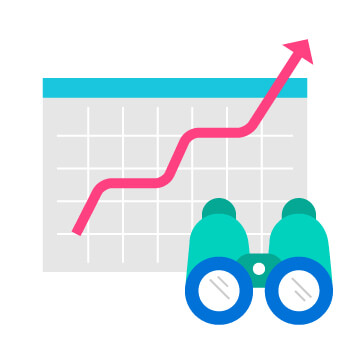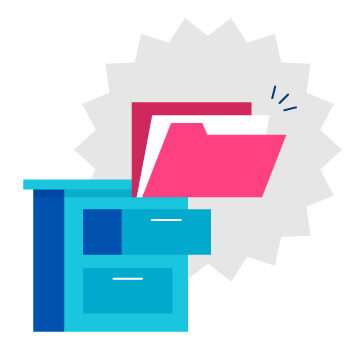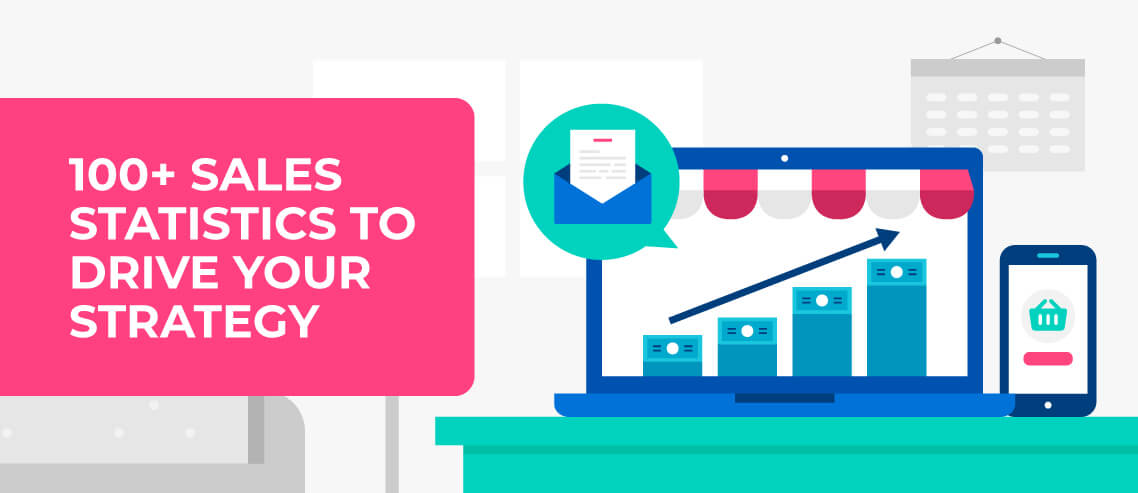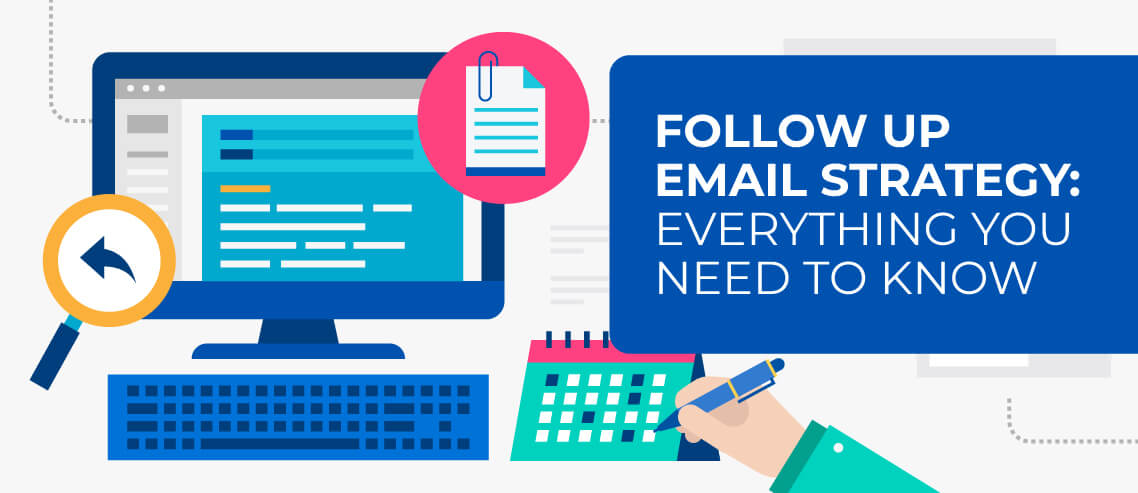How to Write High-Converting LinkedIn Prospecting Messages

Contents
There is nothing more important than being able to clearly and concisely communicate your message to your customers.
Well, except for one thing: being able to communicate your message in an effective way.
Many business owners and sales professionals treat cold emailing and LinkedIn messaging in the same way. They copy and paste their cold emails into a LinkedIn message and expect to achieve the same results.
Unfortunately, approaching two very different channels with one very narrow strategy is not an effective way to generate new leads.
At my company, Lead Cookie, we have run over 250+ Linkedin outreach campaigns for all sorts of different businesses. Our goal with this post is to share everything we have learned so that you can generate quality leads for your business.
LinkedIn Messages vs. Cold Emails
Before diving into my best tips for writing high-converting LinkedIn prospecting messages, I want to address two major differences between LinkedIn messages and cold emails.
LinkedIn is like texting
First of all, LinkedIn messages open in a small chat window, so your prospect will need to scroll to read any message longer than a few sentences.
For example, notice the message below. It’s so long you can’t even read the start of the message. This is a quick way to have someone immediately ignore your messages.

Not only will it annoy the prospect to have to put in more than minimal time and effort to read a message from someone they don’t already have a relationship with, but it will also lead them to immediately view your message as ‘spammy’. They’re also likely to miss the hook because they’ll want to jump straight to the end of your message.
Think about LinkedIn messages like text messages – you wouldn’t text someone long chunks of text at a time. Don’t do it on LinkedIn either.
Be careful sending links
Secondly, while embedding links in an email is easy and effective, doing so on LinkedIn can yield much different results.
When you include a link in a LinkedIn message, LinkedIn automatically expands that link into a massive thumbnail that takes up the prospect’s entire screen. This is a horrible experience for the prospect as it, again, results in the need to scroll to read your entire message.

This isn’t to say you should never include a link in your LinkedIn messages, but you should be very intentional about doing so.
If you’re unsure how your message will look to a prospect, you can use this LinkedIn post inspector tool to preview your post before sending.
Now that you understand why LinkedIn messages should be treated differently from cold emails, here are 11 tips for writing high-converting LinkedIn prospecting messages:
- Shorter is better.
- Focus on your prospect, not on yourself.
- Follow the “4 touch points” rule.
- Clearly communicate your value proposition.
- Show social proof.
- Include a case study.
- Offer a resource.
- Share your portfolio.
- Clean up your data.
- Get personal.
- Create an omnichannel follow up sequence.
Tip #1: Shorter is better
Our mantra at Lead Cookie is “keep it short.”
If a prospect needs to decide whether they want to read your message, then it’s too long. Make your message so short that your prospect will see it and read it right away as soon as they open it.
The goal with your initial outreach isn’t to dump every bit of information about your product or service offering onto your prospect. Rather, all you need to do with your initial message is get your prospect to raise their hand and express an interest in receiving more information from you.
Your initial outreach message should never be more than three sentences long. A good format to follow is: “We can do X for Y for people like you. We’ve gotten Z results. Call to action.” Plug in your own information for X, Y, and Z, and you’ve got yourself a clear and concise message that no one will need to think twice about reading.
What it looks like
Hi {name},
We can make cold outreach simple for people like you. We helped one customer generate $100,000 in revenue from a single campaign. If you’re interested in learning how we did it, let me know and I’ll send you the process we followed.
Tip #2: Focus on your prospect, not on yourself
One big mistake I see business owners make in their LinkedIn prospecting messages is starting every sentence with “I” and focusing on themselves rather than on the prospect.
In fact, 95% of LinkedIn pitches are just that – pitches. They’re only focused on themselves and not on the prospect.
Instead of being super “me” focused, try to frame your message toward the prospect. Lead with something like, “Hey Dan, your profile caught my eye…” or “Your business is really interesting, Emily.”
By framing your message toward the prospect, you are communicating to them that your objective in reaching out is to help them and not you. Focus on your customer’s pain points, and, as a result, you’ll be able to generate 10x more leads than focusing on yourself.
What it looks like
Hi {name},
Your profile caught me eye – seems like you’re doing an amazing job on lead generation, and I’d love to hear a little about your process.
At the same time, I could talk you through a couple ways we help our customers save time on cold email outreach. Sound good?
Tip #3: Follow the “4 touch points” rule
Another common mistake I see business owners make when sending LinkedIn prospecting messages is giving up after not receiving a response after their first or second message.
What I always recommend to my clients is the “4 touch points” rule. Until you receive a response from a prospect, you should aim to make four touch points with your prospect over a period of 1-2 months.
Here’s an example of what a 4 touch point sequence might look like:
- Send an initial message on LinkedIn.
- Once the prospect accepts your message, send a follow up message within 24 hours.
- If you don’t receive a response, send another message in 1-2 weeks. Try to approach this message from another angle, such as offering a free resource.
- If you still don’t receive a response, send one final message about one month after your previous message. Try to approach this message from yet another angle. For example, you can try to get them on a free consultation call with you.
The goal of the “4 touch points” rule is to be persistent without being spammy. It’s also a safe number of messages to send without getting flagged as spam by LinkedIn and having a hold put on your account.
What it looks like
Message 1
Hi {name},
We can make cold outreach simple for people like you. We helped one customer generate $100,000 in revenue from a single campaign. Ask me how!
Message 2
Hi {name},
Thanks for accepting my message. I work with a lot of brands like yours, helping them get 10X revenue from their email outreach.
Would you be interested in a 15-minute call tomorrow so I can talk through what we could do for you?
Message 3
Hi {name},
Brands like yours need a consistent stream of high-quality leads to grow and thrive.
We’ve written this new ebook all about how SaaS businesses can generate a higher return from their cold email outreach. You can download it here: [link to ebook]
Are you free for 15 minutes tomorrow to talk through your lead gen process?
Message 4
Hi {name},
Great news – we’ve started offering a free, no-obligation consultation to help brands like yours get a stronger return from their cold email outreach.
Click the Calendly link to book your spot: [link to Calendly]
Tip #4: Clearly communicate your value proposition

As you can see from the visual above, value proposition, social proof, and strategic messaging all play a role in helping you achieve massive results from LinkedIn. Let’s break it down:
- Value proposition: your unique offer.
- Social proof: relevant, big name customers similar to your prospect.
- LinkedIn messaging: the strategic messaging tips you’re learning from this article.
While all three factors can contribute toward getting you results, having a strong value proposition is by far the most important.
You can have weak messaging but still get massive results if you have a strong value proposition. However, without a strong value proposition, even the most strategic LinkedIn messaging might not produce results.
What it looks like
Hi {name},
At Mailshake, we help sales teams like yours turn cold prospects into warm leads with automated prospecting outreach via email, social, and phone.
Want to learn more?
Tip #5: Show social proof
In addition to having a strong value proposition, it also helps if you can show social proof.
If you’ve worked with big name customers in the past who are in the same industry or niche as your prospect, include their name in your LinkedIn prospecting message.
Just make sure the customer is actually a big name that people know and care about.
What it looks like
Hi {name},
At Mailshake, we help over 44,000 brands – including Fundrocket and Sleeknote – turn cold prospects into warm leads through automated prospecting.
Want to learn more?
Tip #6: Include a case study
Of course, not everyone has had the opportunity to work with big name clients.
If you don’t yet have relevant social proof to show, then include a case study in your LinkedIn prospecting message instead.
A case study shows the prospect how you’ve been able to help a similar company achieve their desired results in the past.
Even though not everyone who asks you to send it to them will turn into a customer, you’ve at least gotten your first “yes” from that prospect.
What it looks like
Hi {name},
We have this case study on how we doubled appointments from cold email outreach for another business broker. It shows exactly how we did it. Would you like me to send it your way?
Tip #7: Offer a free resource
Remember when I said you need to be very intentional about sending links via LinkedIn messenger because LinkedIn automatically converts links into massive thumbnails that takes up the entire screen?
Well, one way you can be intentional about sending a link is by sending a link to a free resource.
Offering a free resource is a highly effective and easy way to get your first hand raise, but you need to be strategic about it.
Here’s an example of what your “4 touch points” would look like with this approach:
- Send a light connection request positioning your company.
- “I put together this free resource. Would you like me to send it to you?”
- Reiterate the value of the free resource, and offer it again.
- Send a direct pitch for a meeting or call.
Notice in the above example that you want to first describe your resource to your prospect and ask whether you can send it over before blasting your link to everyone without discretion.
Following this approach ensures three things:
- You’re offering value on the front end.
- You get the prospect’s permission before you send anything over.
- You get your first small “yes” from the prospect.
Just remember that this approach is only effective if your free resource is a high quality resource that is relevant and contains substantial value for your prospect.
A good way to evaluate whether your resource is valuable is to put yourself in your prospect’s shoes and ask yourself whether the resource would be valuable and interesting to you.
Some examples of valuable and highly effective resources my clients have used are books on relevant topics, case studies that show how a strategy or approach has been applied, and guides that contain substantial valuable information.
It has to be more – much more – than a quick little blog post you threw together in an hour.
By following this approach correctly, my customers have achieved a 4-5x increase in results.
What it looks like
Message 1
Hi {name},
At Mailshake, we help sales teams like yours turn cold prospects into warm leads with automated prospecting outreach via email, social, and phone.
It’d be great to connect and find out a little about your business.
Message 2
Hi {name},
We’ve written this new ebook all about how SaaS businesses can generate a higher return from their cold email outreach.
Would you like me to send it to you?
Message 3
Hi {name},
In our new ebook, we share secrets from three companies in your niche who are generating hundreds of warm leads every month through cold outreach.
Want to see how they do it? Let me know, and I’ll send you the link.
Message 4
Hi {name},
Want to find out how we help businesses like yours generate a higher return from their cold email outreach?
Use this Calendly link to book a 15-minute call with me, and I’ll talk you through our process: [link to Calendly]
Tip #8: Share your portfolio
For creatives, such as designers, developers, copywriters, photographers, and videographers, nothing will sell you more than your portfolio.
All your customer wants to see is that you can do good work, so rather than describing the type of work you can perform, just show them.
This approach is so simple.
After making a light connection request to position your offer, simply say something like, “My company does X. Would you like to see our portfolio?”
Most of the time, your prospect will respond with something like, “Sure, send it over.”
Even though the prospect might not have the need for your services right now, they’ll have your portfolio on hand for whenever the need arises.
What it looks like
Hi {name},
My company does high-quality design and copywriting for email marketing.
Would you like to take a look at our portfolio?
Tip #9: Clean up your data
Many business owners like to use mail merges to send automated outreach emails. While this isn’t necessarily bad practice, it is bad practice to use mail merges without first cleaning up your data.
For example, my job title on LinkedIn is “Founder | Linkedin Lead Generation via done-for-you prospecting.”

If you were to mail merge that into a message, it would look silly and ridiculous:

There are many things wrong with the message above, but a glaring issue is the company name format that was clearly pulled from a mail merge without being cleaned up first.
If you decide to use mail merge to send your initial outreach messages, just make sure you clean up your data so that a job title like mine shows up as “Founder” instead of “Founder | Linkedin Lead Generation via done-for-you prospecting.”
What it looks like
Hi {name},
Thanks for getting back to me.
Your timing was great, because I just read the blog you wrote on marketing automation – you made some really interesting points!
Are you free for a 15-minute call tomorrow to chat through how we could help you generate a higher return from your cold email outreach?
Tip #10: Get personal
While it is perfectly acceptable to use an automation tool like mail merge to send out your initial prospecting messages on LinkedIn (as long as you clean up your data first), it would be a big mistake to continue using those automation tools once you receive a response from your prospect.
Once your prospect responds to your LinkedIn message, make sure you send a personal response right away.
It is shocking how many of my prospects are surprised when they receive a personal message from me. Many people assume there’s a robot behind every LinkedIn prospecting message and not a human, so a personalized message can go a long way.
Tip #11: Create an omnichannel follow up sequence
Not only should you immediately send a personalized response once your prospect messages you back on LinkedIn, but you should also create an omnichannel follow up sequence.
Sounds fancy, but all it means is that you should expand your conversation across multiple platforms, such as phone and email (Mailshake is the perfect tool).
Our best customers who see the biggest ROIs are champions at this. Once they get a prospect to raise their hand and show interest, they implement a relentless follow up sequence across phone, email, and Linkedin to convert those hand raises into phone calls and, ultimately, sales.
Getting your prospect’s contact information is super easy with LinkedIn Sales Navigator. Simply hover over the contact icons under your prospect’s profile, and their contact information will appear.

Tip #12: Automate, automate, automate
If you’re reaching out to hundreds of prospects every week, it’s impossible to manually stay on top of following up with all of them.
That’s why a sales engagement tool like Mailshake is essential to creating an effective, scalable follow-up sequence.
With Mailshake, you can personalize your emails and LinkedIn connection request messages in bulk with powerful mail merge features, schedule follow-up emails and social messages that are paused or triggered based on whether a a recipient opens an email, clicks a link, or replies, and reply to leads straight from your Mailshake dashboard with Lead Catcher.
You can also set the amount of time between follow-ups (5 days between the first and second email, 7 days between the second and third, etc.), and the days and times you want them to send (for instance, between 8 am and 6 pm on weekdays).
Optimize your copy and overall outreach strategy by AB testing different subject lines, body copy, and full campaign sequences. And with native integrations to your CRM, and third party integrations to hundreds of software tools via Zapier, you can automate your outreach even further by triggering campaigns when someone downloads an eBook, books a meeting, or signs up for a demo.
If phone is a part of your outreach cadence, you can include it as a touch point in your outreach cadences as well with Mailshake Sales Engagement.
Bottom line: following up is absolutely essential to an effective outreach strategy, but there’s no reason why you can’t automate it.
Additional Resources
Now that you have these 11 new tips for writing high-converting LinkedIn prospecting messages, it’s time to revisit your Mailshake campaigns. Try to build more powerful LinkedIn outreach steps into your Mailshake campaigns using these 11 tips.





